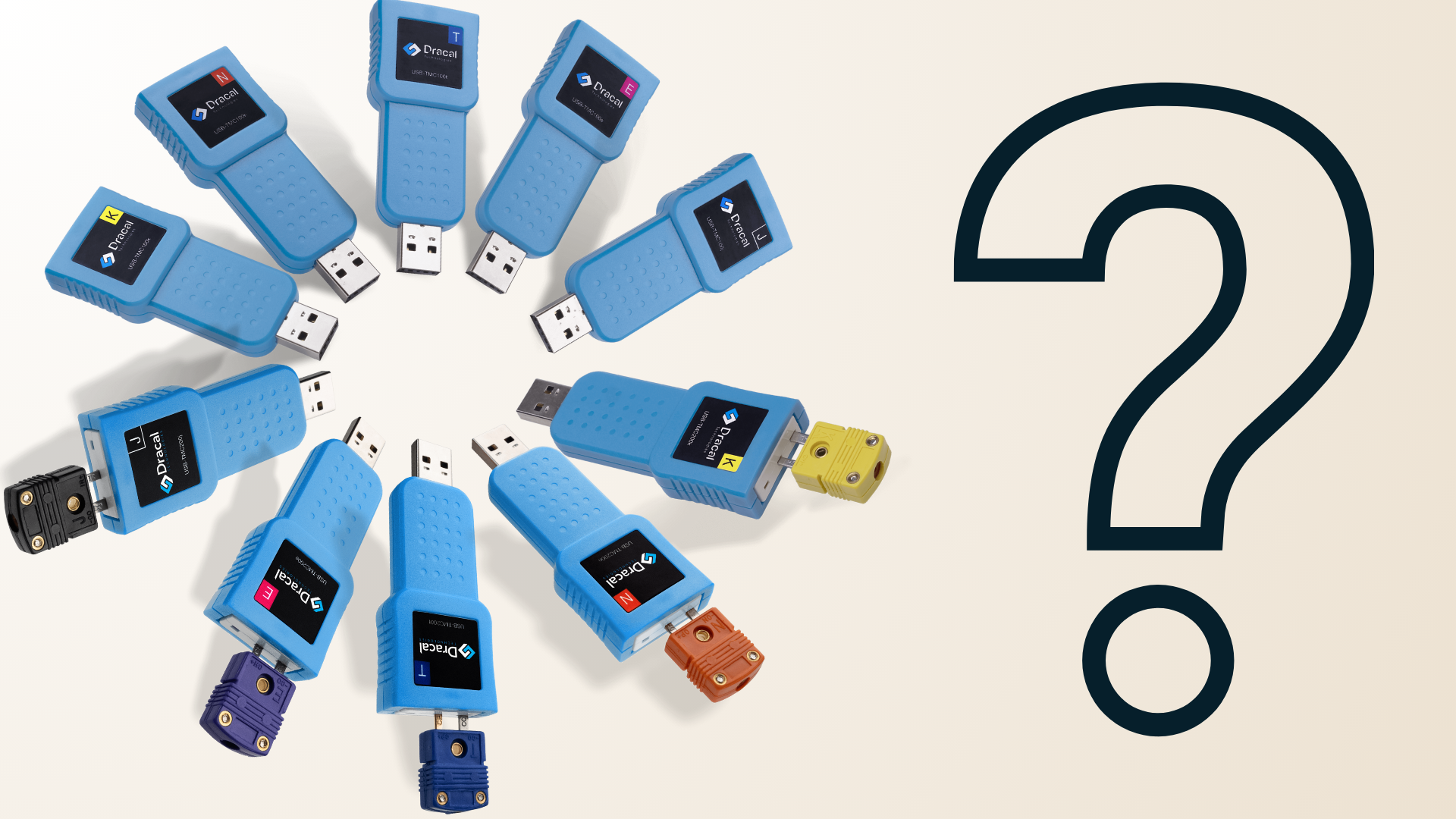10 Questions about USB Adapters for Thermocouple Probes (TMC)

This guide summarizes the answers to the most frequently asked questions about the TMC series, USB adapters for thermocouples.
- 1- Can the probes be submerged in water?
- 2- A thermocouple can be used at more extreme temperatures than the announced housing temperature range (0°C to 50°C). What precautions should I take?
- 3- Can I use any probe of my choice with your adapters?
- 4- How do I connect my thermocouple to the adapter?
- 5- Why did you choose to offer only one thermocouple probe type?
- 6- What is the difference between the TMC100 and TMC200 series?
- 7- What calibration is performed on the instruments during production?
- 8- Is the individual calibration of the measuring instruments done at the Dracal factory?
- 9- Can I have a STEP/CAD file of the purchased TMC for its dimensions?
- 10- Is an external probe necessary for calibrating the adapter?
1- Can the probes be submerged in water?
No, thermocouple probes cannot be submerged, and neither can the USB adapters.
2- A thermocouple can be used at more extreme temperatures than the announced housing temperature range (0°C to 50°C). What precautions should I take?
To measure temperature, only the probe should be placed in an environment hotter than 50°C. Additionally, the stated accuracy for the adapters is optimal when they are at 25°C.
3- Can I use any probe of my choice with your adapters?
Absolutely! These are universal adapters. Just make sure to choose the adapter that matches your thermocouple type (J, K, N, E, T).
4- How do I connect my thermocouple to the adapter?
A two-pin connector is provided with the adapter. Simply open it and plug in the wires of your thermocouple. Then, insert the connector into the USB adapter, and you're good to go! Removing the connector from the adapter is also challenging, making the construction very robust.
5- Why did you choose to offer only one thermocouple probe type?
There is a multitude of thermocouple probes suitable for all possible and imaginable usage scenarios. Although we are not distributors of temperature probes, we still want to provide the possibility of obtaining a complete solution on our platform. Therefore, we have selectively chosen one probe of each type that can meet the needs of the majority of our users.
6- What is the difference between the TMC100 and TMC200 series?
The TMC100 series offers USB adapters for thermocouples with good resolution (0.0625°C) and average sampling frequency (3 samples per second).
The TMC200 series includes USB adapters for thermocouples with excellent resolution (0.00005°C) and a higher sampling frequency (5 samples per second).
7- What calibration is performed on the instruments during production?
TMC100: The temperature conversion principles for thermocouples are applied as is. No additional compensation is performed. The accuracy still meets thermocouple standards.
TMC200: Calibration at 0°C is performed to compensate for zero error and improve accuracy.
8- Is the individual calibration of the measuring instruments done at the Dracal factory?
At the Dracal production factory, a pass/fail type of testing is conducted during the production of the measuring instrument. Additionally, the component manufacturer carries out individual calibration at their factory before being shipped to us. These calibrations are not ISO17025 certified, but if your industry does not require this standard, you can confidently use Dracal's USB adapters upon receiving them.
9- Can I have a STEP/CAD file of the purchased TMC for its dimensions?
We do not provide this type of file, but all the housing dimensions are indicated in the product datasheet. The cable length is also specified: 1 meter.
10- Is an external probe necessary for calibrating the adapter?
No, it is not necessary to have a probe to calibrate the adapter. Without a probe, the laboratory will use an instrument that simulates the presence of a theoretical thermocouple probe. However, if possible, it is preferable to calibrate the device with the final intended probe in order to compensate for the probe's error during calibration and achieve better accuracy.